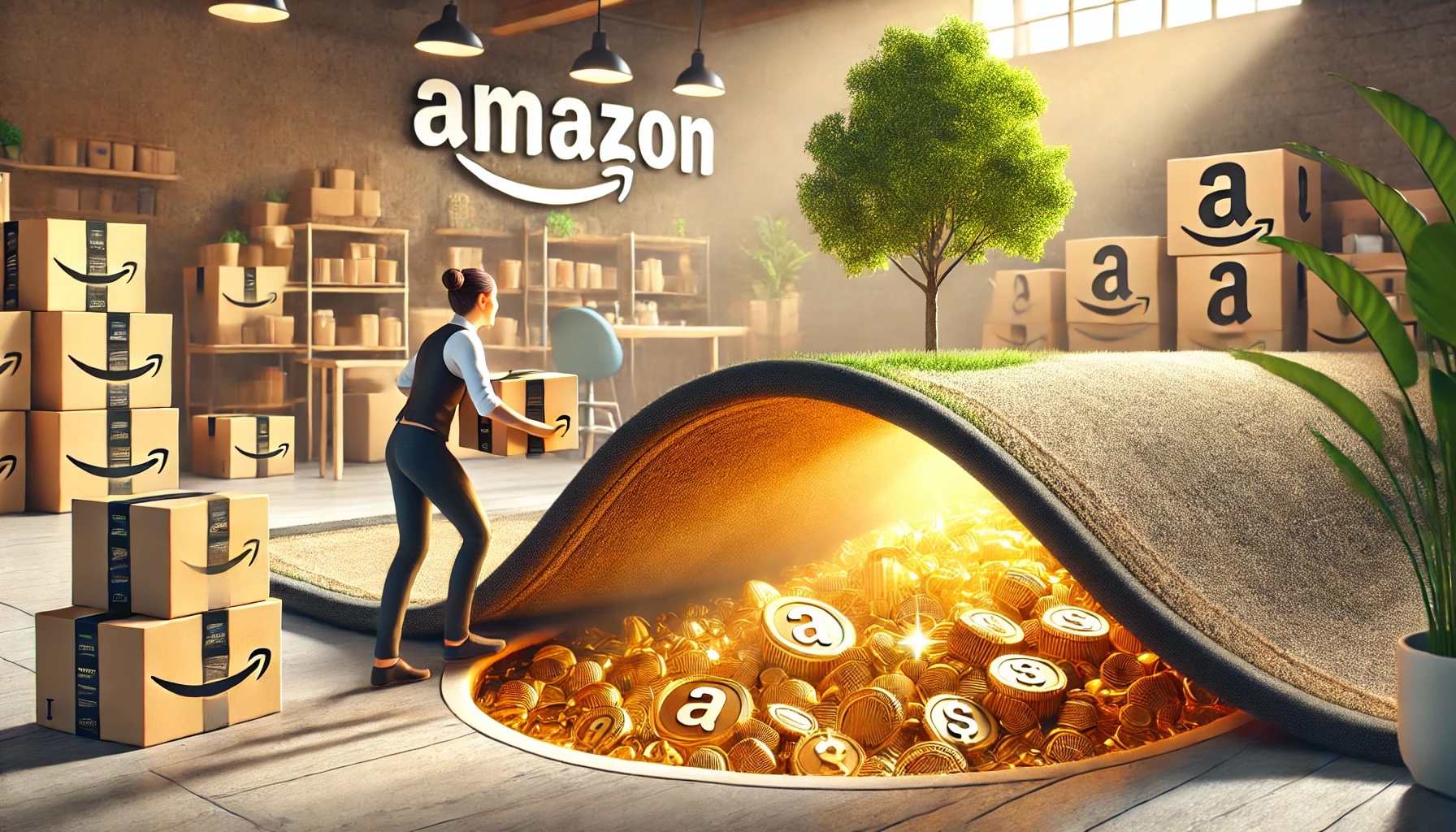The Race to the Top: How to Rank Higher in Amazon Search Results Without Spending a Fortune on Ads
Updated September 5, 2023 – Tired of Your Products Getting Buried in Search Results? This Amazon Training will help you rank higher, sell more, and reduce ad spend!

How did YOU get your start as an Amazon seller?
Maybe you began by signing up for an Amazon selling course that you heard about on Facebook or YouTube. Or, perhaps a friend already selling on Amazon taught you a thing or two.
In either case, one of the first things that you probably heard about was the importance of Amazon listing optimization.
Amazon Listing Optimization is Point Zero for Ecommerce Sellers
But, there’s a big problem with that. There are now over 9.7 million Amazon sellers worldwide. A large percentage of those sellers are watching the same videos and attending similar courses in their quest to make it onto Amazon’s first page. If that’s not the case, they could be following the identical path that their Amazon-selling friends did when they began.
As Canopy Management has written in a previous blog post, Amazon is perfectly happy if everyone is a little bit successful. After all, they are going to get paid one way or the other. However, you are uniquely focused on the success of your own product.
You are in COMPETITION with the rest of the sellers in your niche.
How Does Amazon Decide Who Gets the Sale?
With over 300 million active users, and 75 million products, how does Amazon keep track of all of those Amazon sellers’ product rankings?
Answer: A very smart machine.
Amazon’s engineers have designed and built a series of increasingly sophisticated algorithms to help them determine what products rise to the top of search results.
According to experts, Amazon’s A9 algorithm continues to reward ecommerce sellers that take the time to thoroughly optimize their Amazon listings. Amazon’s A9 algorithm also attempts to increase visibility for listings with authentic reviews and seems to have doubled down on the importance of external traffic.
Ultimately, it comes down to Amazon SEO.

What is Amazon SEO?
As an ecommerce seller, your goal is to make Amazon’s algorithm very happy with your listing.
SEO is shorthand for search engine optimization. Amazon SEO is another way to refer to listing optimization, or the process of making carefully considered improvements to your Amazon product listings to help them rank higher in shoppers’ searches (and achieve the maximum amount of sales) on Amazon.com.
An ever-increasing number of sellers’ products are vying for the attention of consumers. That requires a correspondingly high level of Amazon SEO. An optimized product listing not only boosts organic visibility, but because Amazon shoppers generally tend to trust and click on listings that appear at the top, it also increases the likelihood that your sales will go (way) up.
The opposite is also true; products that aren’t optimized can easily get buried under a growing pile of similar offerings, rendering them virtually invisible. Amazon SEO is not just about immediate visibility—it’s about laying a strong foundation for long-term growth and success.

Amazon Keyword Research Comes First
If you’re an Amazon seller, your Amazon SEO should start with extensive keyword research to understand the keywords that the product is searchable for.
With Amazon’s platform functioning primarily as a search engine for products, understanding the exact phrases and terms potential customers use to search for items is mission critical.
Conducting thorough keyword research allow you to align your product listings with customer intent, ensuring that your products appear in search results when relevant queries are made. This directly impacts the visibility of a product, driving organic traffic and influencing purchase decisions.
Conducting keyword research is a systematic process that involves understanding and uncovering the terms your target audience uses when searching for products or services. To begin, brainstorm a list of potential keywords related to your product or service. You can use tools like Google’s Keyword Planner, Ubersuggest, or SEMrush can help generate keyword ideas and provide insights into search volume and competition.
Then, analyze competitors’ websites or product listings to identify which keywords they’re targeting. It’s also crucial to consider long-tail keywords—phrases that are longer and more specific—as they often have lower competition and cater to more targeted searches.
Once you’ve compiled a list, assess the relevancy of each keyword to your product or service, its search volume, and its competitiveness. Prioritize keywords that are highly relevant with significant search volume and low to medium competition.
The goal is not just to attract traffic, but to attract the right kind of traffic that can lead to conversions. Continually refine and update your keyword list as market trends, and consumer behaviors evolve.

Amazon Product Listing Optimization – Answering Shoppers’ Questions
One way of establishing strong Amazon SEO is to answer shoppers’ questions well before they’re forced to ask. Amazon product listings should tell prospective customers everything they want (and need) to know about a given product.
The purpose of Amazon product listing optimization is to make sure that every part of the product listing is clear, concise and easy to understand.
Properly executed Amazon SEO means ultra-high quality images and video, keyword-rich, informative titles, and bullet-pointed descriptions of the products.
It also includes fully optimized backend keywords – that though hidden from shoppers – ensure that your products are easily discoverable by Amazon’s A9 algorithm and in turn, by potential customers.
Amazon wants to make the shopping experience as seamless and intuitive as possible for their customers. That’s their number one goal!
Doing so will not only make Amazon happy, it’ll help to ensure that your product listing will show up as a search result at the top of Amazon’s first page.
Listing Optimization Checklist
- Conduct extensive, niche-relevant keyword research
- Make sure that you have at least 6 high-quality images (including lifestyle images, infographics, and video)
- Craft an organic, easy-to-read descriptive title with at least 80 characters, and be sure to include important keywords
- Your product description should be short, clear, and highlight the important features of your product. A great product description should tell your customers why they should buy from you rather than your competitors

Don’t Forget About the Importance of Amazon Product Reviews
Amazon product reviews are a critical component of Amazon SEO and have a large role to play in how your listings ultimately rank on Amazon. That’s because (according to experts) Amazon’s newest update to their A9 algorithm takes a particularly close look at relevant customer reviews when making ranking decisions.
It’s one more reason why you need to make sure that Amazon shoppers have a clear idea of what they’re considering buying. If you’re selling a good product, AND doing a great job of explaining what prospective buyers will see when they open the package, you probably don’t have to worry too much about negative reviews.
However, if you want to really differentiate your Amazon product listing from thousands of your competitors, there’s one more step you might want to take.

Thinking Outside of the Box
This isn’t something that many sellers are doing.
It involves thinking OUTSIDE OF THE BOX. It’s also a process Canopy Management uses to optimize every one of our partners’ Amazon product listings.
The goal is to make sure that the listings JUMP off of the Amazon page.
Over the last two years, Canopy Management has a proven track record of generating an industry-leading average 38% lift in conversions.
And that’s not all . . .
The benefits of the Canopy Management Optimization process reaches beyond the Amazon listing itself to include:
- Increased visibility
- Increased engagement
- Reduced ad costs
- Increased conversion rates
- Increased profit
Now, Let’s Talk About Optimization 2.0
Canopy Management‘s Listing Optimization Service can help you rank for relevant keywords, scale your business, and gain market share on the Amazon marketplace.
We’d love for you to become part of the Canopy Management family of Amazon Agency Partners that we work with on an ongoing, day-to-day basis.
However, our goal at Canopy Management is to expand the reach of our Amazon listing optimization knowledge to a wider audience. That’s why I’ve recorded this video on Amazon Product Optimization 2.0.
My name is Brian R. Johnson, and I have helped over 20,000 brands grow on Amazon and sell over one billion dollars through PPC ad strategy, conversion rate optimization, and differentiation.
To watch the video, please click here or on the image below.

How Canopy Management Can Help
Canopy Management is a full-service marketing agency for Walmart and Amazon sellers. Our team consists of former Amazonians, multi-million dollar sellers, and award-winning experts.
When you consider the many ways that Canopy Management can help you grow your business, you’ll see why selling on Amazon is much easier “under the Canopy.”
- Strategic Growth Planning
- Listing Copywriting Optimization
- Listing Photography
- Product Videography
- Advertising Management
- Customer Service
- Demand Side Platform (Amazon DSP)
- Amazon Posts
- Full Service Management
- Amazon Review Aggregation
Thinking About Hiring an Amazon Management Agency?
Canopy’s Partners Achieve an Average 84% Profit Increase!
Let’s talk

